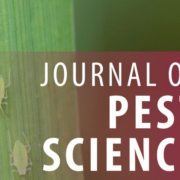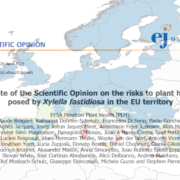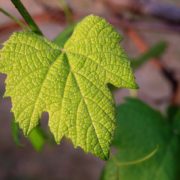A biological control model to manage the vector and the infection of Xylella fastidiosa on olive trees
Authors
Antonella Liccardoa, Annalisa Fierrob, Francesca Garganesec, Ugo Picciottid, Francesco Porcellic
Affiliations
- a Physics Department, Università degli Studi di Napoli “Federico II”, Napoli, Italy, b Consiglio Nazionale delle Ricerche (CNR)—Institute Superconductors, oxides and other innovative materials and devices (SPIN), Napoli, Italy, c Dipartimento di Scienze del Suolo, della Pianta e degli Alimenti, University of Bari Aldo Moro, Apulia, Italy, dDepartamento de Ciencias del Mar y Biologia Aplicada, Universidad de Alicante, Alicante, Spain,
Abstract
Xylella fastidiosa pauca ST53 is the bacterium responsible for the Olive Quick Decline Syndrome that has killed millions of olive trees in Southern Italy. A recent work demonstrates that a rational integration of vector and transmission control measures, into a strategy based on chemical and physical control means, can manage Xylella fastidiosa invasion and impact below an acceptable economic threshold. In the present study, we propose a biological alternative to the chemical control action, which involves the predetermined use of an available natural enemy of Philaenus spumarius, i.e., Zelus renardii, for adult vector population and infection biocontrol. The paper combines two different approaches: a laboratory experiment to test the predation dynamics of Zelus renardii on Philaenus spumarius and its attitude as candidate for an inundation strategy; a simulated experiment of inundation, to preliminary test the efficacy of such strategy, before eventually proceeding to an in-field experimentation. With this double-fold approach we show that an inundation strategy with Zelus renardii has the potential to furnish an efficient and “green” solution to Xylella fastidiosa invasion, with a reduction of the pathogen incidence below 10%. The biocontrol model presented here could be promising for containing the impact and spread of Xylella fastidiosa, after an in-field validation of the inundation technique. Saving the fruit orchard, the production and the industry in susceptible areas could thus become an attainable goal, within comfortable parameters for sustainability, environmental safety, and effective plant health protection in organic orchard management
Acknowledgements
This work was funded by the European Union’s Horizon 2020 research and innovation programme through grant agreements POnTE (635646) and XF-ACTORS (727987).
Published on PLOS ONE on April 30, 2020









